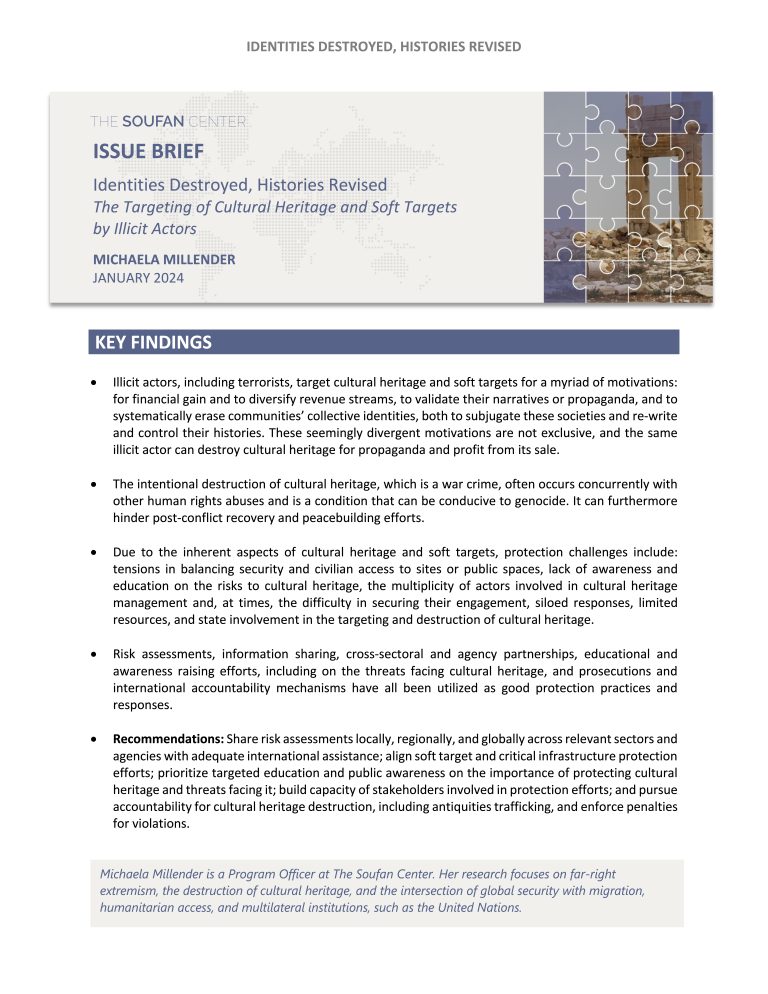RESEARCH
POSTED ON January 29, 2024
Identities Destroyed, Histories Revised: The Targeting of Cultural Heritage and Soft Targets by Illicit Actors

On May 27, 1993, a car bomb blasted through the side of the Uffizi Gallery in Florence, Italy, killing five and wounding around thirty others, and destroying hundreds of priceless pieces of art in the gallery’s collection. Many contend that the gallery was targeted by the Cosa Nostra, or the Sicilian Mafia, not just in retaliation for crackdowns on the organization, but also due to the gallery’s embodiment of Italian culture and its symbolism of the Italian nation. As an open-access museum and a protected UN Educational, Scientific and Cultural Organization (UNESCO) World Heritage site, the city of Florence presents unique challenges to both safeguarding its cultural heritage from risks but also, most critically, remaining open and accessible to the public. Not limited to the Florentine example, this challenge is ubiquitous in the protection of cultural heritage throughout the world. Its symbolic importance, as well as the fact that it attracts large crowds of civilians and may not always be adequately protected, means that cultural heritage – which is often also considered a so-called “soft target” – can be a prime target for violence and an objective for illicit actors, including criminals and terrorists.
DOWNLOAD FULL REPORTFor tailored research and analysis, please contact: info@thesoufancenter.org